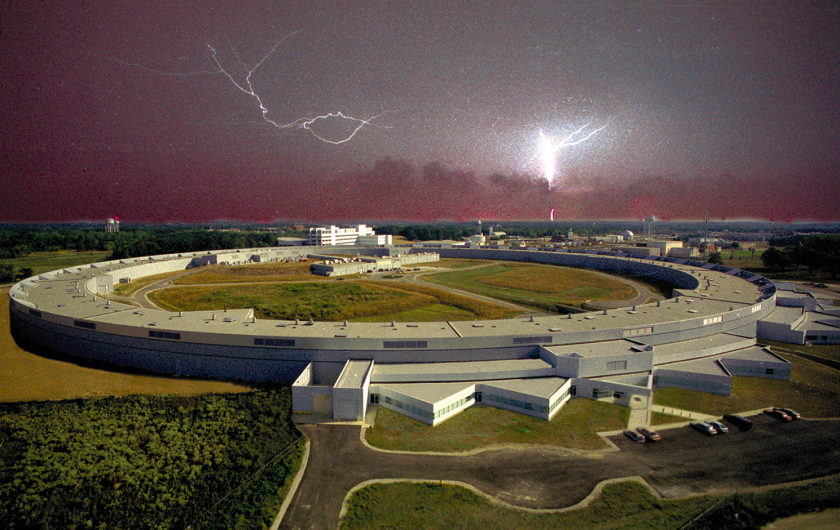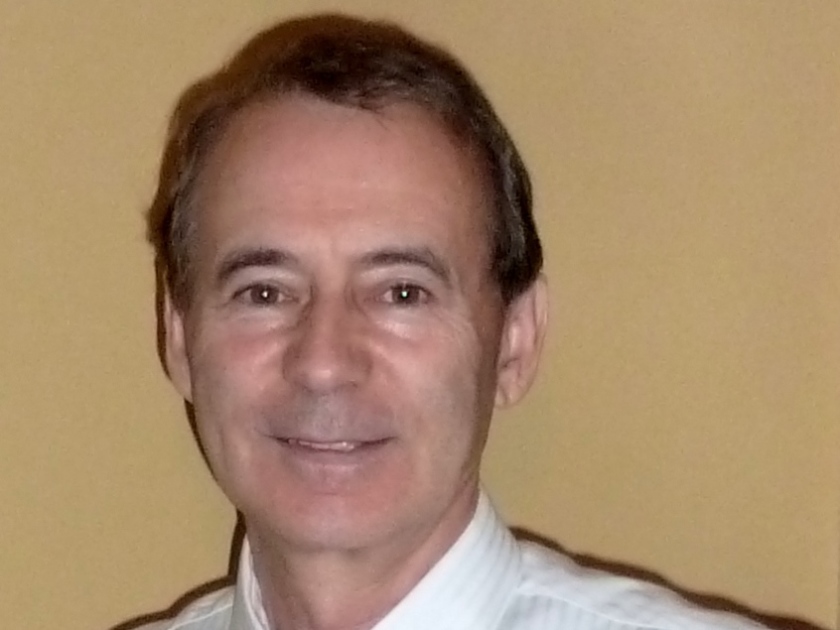D-Lecture: A Light and a Beam

The Advanced Photon Source facility illuminated by lightning. ( © Argonne National Laboratory

Alexander Zholents is the Director of the Accelerator Systems Division at Argonne National Laboratory.
Dr. Alexander Zholents from Argonne National Laboratory will present on 18th December 2014 his thoughts on "A Light and a Beam: a Theme with Variations". The presentation will be given at the lecture hall of the Wilhem-Conrad-Röntgen-Campus of HZB at 2 pm. After the presentation, we invite you to “Glühwein” and informal discussion.
What: D-Lecture
When: 14:00, 18. december 2014
Where: BESSYII, Lecture Hall
In his Distinguished Lecture, Aexander Zholents will discuss various techniques for making better beams of charged particles and beams better matched to applications. His examples will include the optical stochastic cooling, formation of the electron bunches for free-electron lasers, generation of x-rays pulses suitable for four-wave mixing experiments, laser-assisted electron beam conditioning for free-electron lasers, beam conditioning in storage rings for generation of picosecond x-ray pulses and more.
Alexander Zholents is the Director of the Accelerator Systems Division at Argonne National Laboratory. His research interests are focused on design, construction, commissioning and operations of synchrotron radiation sources and x-ray free-electron lasers.
We are happy to inform you that we will provide you with a shuttle from Wannsee to Adlershof and return. If you like to use this shuttle for one-way, return or both, then please send an e-mail to jennifer.bierbaum@helmholtz-berlin.de. The shuttle from Wannsee will leave at 1 pm and return at 4 pm (sharp).
red.
https://www.helmholtz-berlin.de/pubbin/news_seite?nid=14108;sprache=deamp
- Link kopieren
-
Neues Instrument bei BESSY II: Die OÆSE-Endstation in EMIL
An BESSY II steht nun ein neues Instrument zur Untersuchung von Katalysatormaterialien, Batterieelektroden und anderen Energiesystemen zur Verfügung: die Operando Absorption and Emission Spectroscopy on EMIL (OÆSE) Endstation im Energy Materials In-situ Laboratory Berlin (EMIL). Ein Team um Raul Garcia-Diez und Marcus Bär hat die Leistungsfähigkeit des Instruments an elektrochemisch abgeschiedenem Kupfer demonstriert.
-
Grüner Wasserstoff: Käfigstruktur verwandelt sich in effizienten Katalysator
Clathrate zeichnen sich durch eine komplexe Käfigstruktur aus, die auch Platz für Gast-Ionen bietet. Nun hat ein Team erstmals untersucht, wie gut sich Clathrate als Katalysatoren für die elektrolytische Wasserstoffproduktion eignen. Das Ergebnis: Effizienz und Robustheit sind sogar besser als bei den aktuell genutzten Nickel-basierten Katalysatoren. Dafür fanden sie auch eine Begründung. Messungen an BESSY II zeigten, dass sich die Proben während der katalytischen Reaktion strukturell verändern: Aus der dreidimensionalen Käfigstruktur bilden sich ultradünne Nanoblätter, die maximalen Kontakt zu aktiven Katalysezentren ermöglichen. Die Studie ist in „Angewandte Chemie“ publiziert.
-
Katalyseforschung mit dem Röntgenmikroskop an BESSY II
Anders als in der Schule gelernt, verändern sich manche Katalysatoren doch während der Reaktion: So zum Beispiel können bestimmte Elektrokatalysatoren ihre Struktur und Zusammensetzung während der Reaktion verändern, wenn ein elektrisches Feld anliegt. An der Berliner Röntgenquelle BESSY II gibt es mit dem Röntgenmikroskop TXM ein weltweit einzigartiges Instrument, um solche Veränderungen im Detail zu untersuchen. Die Ergebnisse helfen bei der Entwicklung von innovativen Katalysatoren für die unterschiedlichsten Anwendungen. Ein Beispiel wurde neulich in Nature Materials publiziert. Dabei ging es um die Synthese von Ammoniak aus Abfallnitraten.
